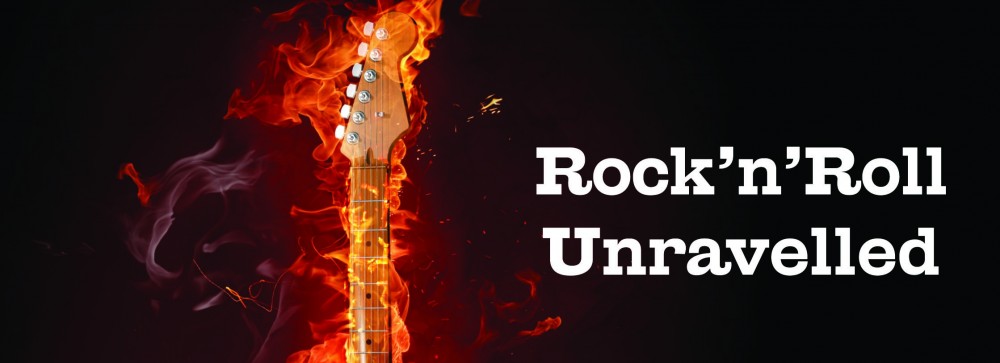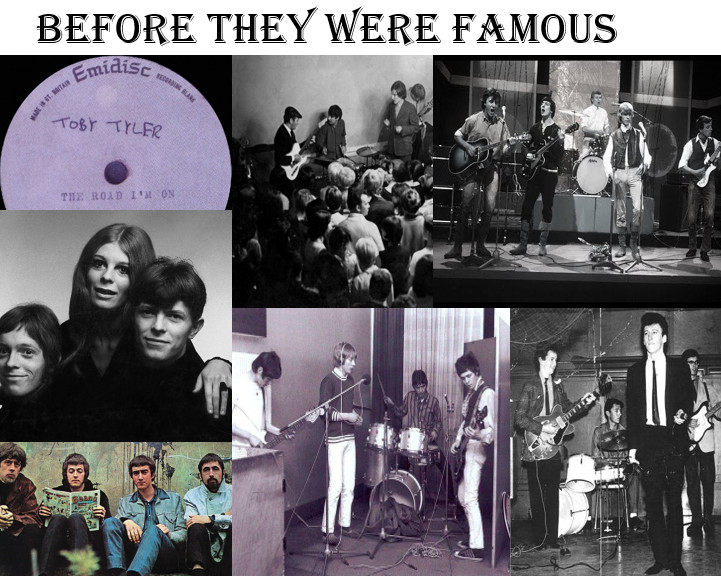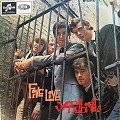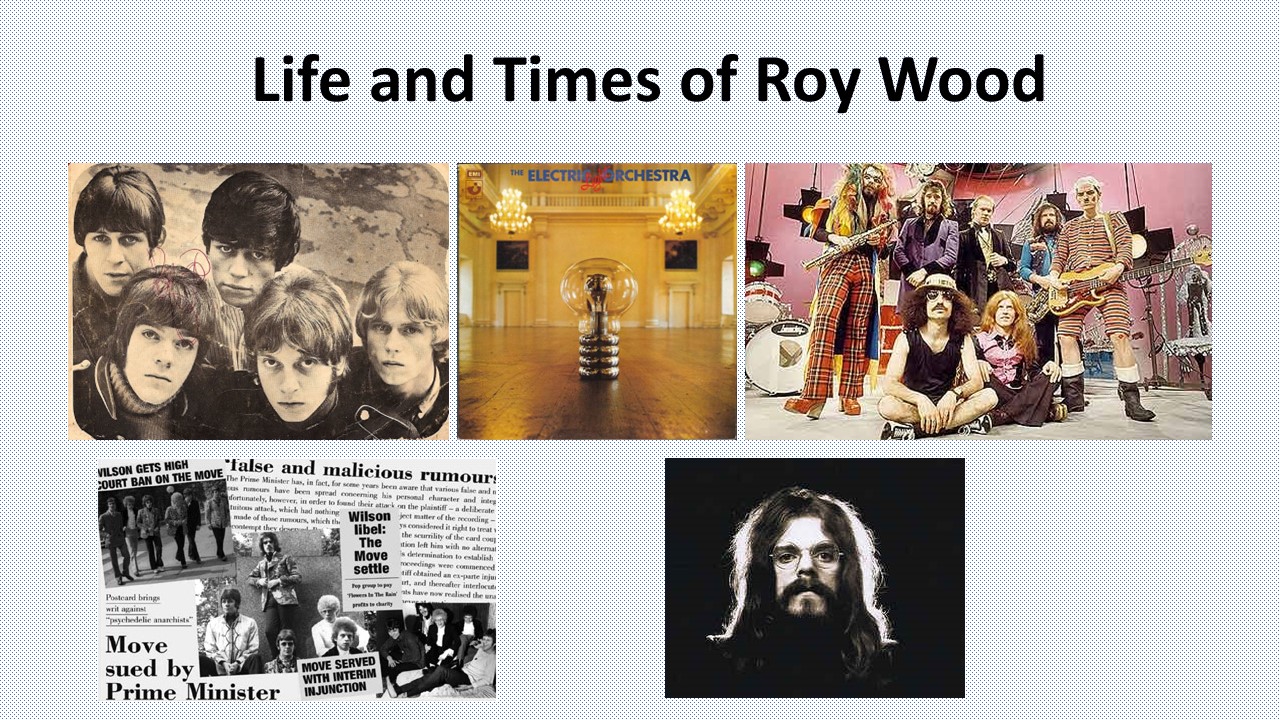Before They Were Famous
For the PODCAST associated with this blog
Have you ever wondered what Eric Clapton, Rod Stewart, Marc Bolan and David Bowie were up to, before they were famous.
……all beavered away for years, before they found international success.
ERIC CLAPTON
30 March 1945: Born in Ripley, Surry
THE ROOSTERS
January 1963: Joined the Roosters.
The band included Tom McGuinness, later in Manfred Mann, and Ben Palmer, who frequently pops up in Eric’s career. Rolling Stones founder, Brian Jones, is believed to have sat in with the Roosters from time to time.
CASEY JONES AND THE ENGINEERS
September/October 1963: Joined Casey Jones and the Engineers for around 7 gigs. Casey Jones was Liverpool legend Brian Casser, who was very active on the Liverpool scene in the late 1950s and early 1960s.
THE YARDBIRDS
30 October 1964: Yardbirds released their second single Good Morning Little Schoolgirl.
Giorgio Gomelsky produced it, as he did with most of their material. It was their first UK hit single and made #44 on the charts. A couple of months later they released their debut album Five Live Yardbirds, recorded at the Marquee club in London on 13 March 1964.
3 March 1965: Eric Clapton’s final gig with the Yardbirds.
He became increasingly frustrated by the group’s pop-orientated direction, particularly their third single.
5 Mar 1965: Yardbirds released For Your Love c/w Got to Hurry.
For Your Love was written by Graham Gouldman. The writing credit for Got to Hurry went to “O. Rasputin”, otherwise known as Giorgio Gomelsky. The band credit on the label showed Eric’s prominence, “Yardbirds featuring Eric “Slowhand” Clapton”.
JOHN MAYALL’S BLUESBREAKERS
Following his desire to play the blues. Eric Clapton joined the highly respected John Mayall’s Bluesbreakers and his place as Yardbirds’ lead guitarist was taken by Jeff Beck.
Lineup: John Mayall, Eric Clapton, John McVie bass (went on to Fleetwood Mac) and drummer Hughie Flint.
THE GLANDS
end July 1965: Eric Clapton took a sabbatical from the Bluesbreakers and formed the Glands, with a lineup which included Ben Palmer from the Roosters. The plan was to play their way across Europe and maybe even Australia but they only managed to get as far as Greece. There they were effectively blackmailed by a club owner, for working without permits. They managed to make their escape but urban legend has it that Clapton lost his amplifier in the process.
JOHN MAYALL’S BLUESBREAKERS
22 October 1965: John Mayall released I’m Your Witchdoctor c/w Telephone Blues.
Featuring Eric Clapton, both sides were written by John Mayall and produced by Jimmy Page. The single was released on Andrew Loog Oldham’s Immediate record label and he took over the Stones’ management from Giorgio Gomelsky.
early November: Eric Clapton was back with John Mayall after the Glands.
The lineup had changed and Jack Bruce replaced John McVie, who had left to join Fleetwood Mac. On his return to the Bluesbreakers, Clapton replaced guitarist Peter Green, who had only joined the band a week earlier. It wasn’t all bad news for Peter Green. When Eric Clapton left to form Cream, Green was brought back to replace him.
22 July 1966: John Mayall released Bluesbreakers with Eric Clapton.
The lineup: Eric Clapton, Hughie Flint, John McVie and John Mayall. The album was released about that same time that Eric Clapton parted company with the Bluesbreakers to form Cream. Mike Vernon produced the album and went on to found the Blue Horizon record label in 1967.
CREAM
For the full story of the origins of Cream, check out the previous podcast, STORY OF CREAM and the companion blog – STORY OF CREAM.
The short version: Eric Clapton sat in on a Graham Bond Organisation gig, with drummer Ginger Baker. Then Eric Clapton played a gig in Oxford with John Mayall’s Bluesbreakers with a guest appearance from Ginger Baker. They both rated each other very highly and Ginger Baker asked Eric if he fancied starting a band. Clapton was keen but insisted that Jack Bruce joined them. Eric Clapton did not know about the Bruce/Baker history and had no idea that they really did not get on with each other.
ERIC CLAPTON – FAME AT LAST
Cream played a warm-up gig at Manchester’s Twisted Wheel club. A couple of days later, on 31 July 1966, they performed at the 6th National Jazz and Blues Festival in Windsor, south of England. They appeared on the third and final day, alongside Georgie Fame, The Action and Alan Bown.
ROD STEWART
10 January 1945: Born in Highgate, London
Rod Stewart started out busking around the bars of Spain and Italy, with his banjo and friend Wizz Jones. The sojourn ended for Stewart, when he was deported from Spain for vagrancy.
JIMMY POWELL AND THE FIVE DIMENSIONS
The Dimensions formed in London and teamed up with singer Jimmy Powell. Before the Dimensions, Jimmy Powell was in an early version of the Rockin’ Berries and released a handful of solo singles.
In July 1963, Rod Stewart joined as harmonica player with ambitions to become a singer. The Dimensions was the first group Rod Stewart sang in professionally.
January 1964: Rod Stewart left Jimmy Powell and the Five Dimensions.
LONG JOHN BALDRY AND THE HOOCHIE COOCHIE MEN
Stewart’s next major career step was with Long John Baldry and the Hoochie Coochie Men.
When Cyril Davies died, singer Long John Baldry took over the leadership of the Cyril Davies R&B All Stars and rebranded it to the Hoochie Coochie Men.
June 1964: Long John Baldry and the Hoochie Coochie Men released You’ll Be Mine c/w Up Above My Head I Hear Music in the Air.
Sister Rosetta Tharp wrote and recorded the B-side, which was Rod Stewart’s first recording. Willie Dixon wrote You’ll Be Mine.
ROD STEWART – SOLO
October 1964: Rod Stewart released his first solo single, Good Morning Little Schoolgirl.
Written by Sonny Boy Williamson (I) and recorded by him in 1937, the recording featured bassist John Paul Jones, who later found fame with Led Zeppelin.
The Yardbirds released the song as their second UK single around the same time as Stewart’s version. It gave the Yardbirds their first UK hit, peaking at #44. Rod Stewart had to wait until 1971 for his first solo hit. That came with his cover of Tim Hardin’s Reason to Believe.
STEAMPACKET
22 July 1965 Steampacket debuted at the Marquee
Lineup included: Rod Stewart, Long John Baldry, Brian Auger, Julie Driscoll and drummer Mickey Waller, who played with Stewart in the Jeff Beck Group.
ROD STEWART – SOLO
15 April 1966: Released his version of Sam Cook’s Shake.
Sam Cooke died in tragic circumstances on 11 December 1964. Two weeks after his death, Shake c/w A Change is Gonna Come was released in America. Both sides charted. This proved to be Cook’s penultimate American hit.
THE SHOTGUN EXPRESS
21 October 1966: Released their first single, I Could Feel the Whole World Turn Around.
The lineup included: Peter Bardens, Mick Fleetwood (later founding member of Fleetwood Mac), Rod Stewart, singer Beryl Marsden (one of Liverpool’s best kept secrets).
JEFF BECK GROUP
Soon after Jeff Beck left the Yardbirds, he formed the Jeff Beck Group with Ron Wood and Rod Stewart
Initially there was a fast turnover of rhythm section, involving very brief stays for ex-Shadows bassist Jet Harris and ex-Pretty Things drummer Viv Prince. Drummers came and went, until Aynsley Dunbar joined and stayed long enough to appear on the first album, Truth.
3 March 1967: Early gig for the Jeff Beck Group.
The Roy Orbison tour opened at the Astoria in London’s Finsbury Park. Small Faces were also on the bill and closed the first half of the show. In a glimpse of the future, the band that would become Faces were all onstage at the Astoria that night – but not at the same time…
FACES
mid-1969: Faces formed, after Steve Marriott left Small Faces.
Steve Marriott left to form Humble Pie with Peter Frampton. Rod Stewart and Ronnie Wood replaced him. They initially worked as Small Faces, before rebranding as Faces.
18 October 1969: Faces announced to the press.
ROD STEWART – SOLO
February 1970; Released his first solo album, An Old Raincoat Won’t Ever Let You Down.
The album included Handbags and Gladrags. Writer Mike d’Abo arranged the song and played piano on the track. Mike d’Abo replaced Paul Jones as the lead singer in Manfred Mann.
FACES
25 March to 30 May 1970: First Small Faces/Faces American tour
ROD STEWART – FAME AT LAST
4 September 1971: Reason to Believe entered the UK charts.
Tim Hardin wrote the song and originally released it on his album Tim Hardin 1.
Rod Stewart finally scored solo success. This single gave him a number #1 for 5 weeks.
MARC BOLAN
30 September 1947: Marc Bolan, born Mark Feld in Hackney, London.
There are various suggestions as to the derivation of his stage name, two of which are:
1 He shared a flat with Likely Lads actor, James Bolam – and adapted his name.
2 He admired Bob Dylan and used his name to derive Bolan – Bob Dylan
SUSIE AND THE HULA HOOPS
late-1950s: Mark Feld and Helen Shapiro formed the school band, Susie and the Hula Hoops.
TOBY TYLER
1964: Toby Tyler recorded an acetate – The Road I’m On c/w Blowin’ in the Wind.
Dion DiMucci wrote The Road I’m On. This was coupled with the Bob Dylan classic Blowin’ In the Wind. The tracks were cut at Vic Keary’s Maximum Sound Studios at 47 Dean Street, Soho London.
MARC BOLAN
12 November 1965: Mark Bolan made his first TV appearance, on Ready Steady Go!
He performed his own composition, The Wizard.
Two more unsuccessful singles as Marc Bolan followed, before he joined John’s Children.
JOHN’S CHILDREN
April 1967: John’s Children’s infamous German tour as the opening band for the Who.
Marc Bolan joined just before the tour started. John’s Children were known for their outrageous stage show. On 12 October the tour reached Friedrich-Ebert-Halle in Ludwigshafen. It was there that the concert degenerated into a full-blown riot. This resulted in the Who kicking them off their tour and John’s Children returned home to England.
29 April 1967: Marc Bolan performed with John’s Children at the 14 Hour Technicolor Dream.
This British freak-out was held at north London’s Alexandra Palace, with tickets at £1. It was a two-stage, mixed media happening, with light shows, music and poetry. A plethora of rock royalty played that night and included: Pink Floyd (with Syd Barrett), The Crazy World of Arthur Brown, The Move, Alexis Korner, Yoko Ono, The Pretty Things, Soft Machine and The Creation.
24 May 1967: Released Desdemona
Desdemona was the first John’s Children single to feature guitarist Marc Bolan. Bolan wrote the song. He wrote most of his own material, even at this early stage of his career.
July 1967: Released – Midsummer’s Night Scene c/w Sara Crazy Child.
Marc Bolan left John’s Children after a disagreement over the single.
TYRANNOSAURUS REX
23 September 1967: Tyrannosaurus Rex made their live debut at London’s Middle Earth club.
Marc Bolan and percussionist Steve Peregrine Took formed this psychedelic-folk duo, Tyrannosaurus Rex. Initially the pair were not well received but they found a champion in DJ John Peel. With his help they soon gained a strong underground following.
19 April 1968: Released the first Tyrannosaurus Rex single, Debora.
Tony Visconti produced the single.
FOUND LIMITED COMMERCIAL SUCCESS
Three Tyrannosaurus Rex hit singles – entered UK chart:
8 May 1968: 1st hit Debora – reached #34
4 September 1968: 2nd hit One Inch Rock – reached #28
9 August 1969: 3rd and last hit – King of the Rumbling Spires – reached #44, just one week on the charts
5 July 1968: Released their first album,
My people were fair and had sky in their hair… but now they’re content to wear stars on their brows
John Peel read the Children’s story.
late 1969: Steve Peregrin Took left – replaced by Mickey Finn.
T.REX
21 April 1970: Elton John’s debut solo concert.
Elton John opened for Tyrannosaurus Rex at London’s Roundhouse. At the time, Tyrannosaurus Rex were transitioning to T.Rex.
MARK BOLAN
19 & 20 September 1970: Marc Bolan appeared at the first Glastonbury Festival.
Inspired by the Bath Blues Festival, farmer Michael Eavis decided to hold his own Pop Folk & Blues festival at Worthy Farm, Pilton, Somerset. The acts included: Marc Bolan, Quintessence, Al Stewart, Keith Christmas, Stackridge, Amazing Blondel and Jethro Tull’s Ian Anderson. 1,500 people are estimated to have attended, with tickets at £1.
MARC BOLAN – FAME AT LAST
T.REX
24 October 1970: T.Rex’s first single, Ride a White Swan, entered UK charts
c/w Is It Summer + Summertime Blues
This single was an early marker for glam rock.
Summertime Blues might well have been included as one of the B-side songs because: urban legend has it that, Mark Feld carried Eddie Cochran’s guitar to his car, whilst it was waiting outside the Hackney Empire during Cochran’s ill-fated last tour in 1960.
UK CHART SUCCESS
24 October 1970: Ride a White Swan – #2 in the charts for 20 weeks
27 February 1971: Hot Love – #1 for 6 weeks
10 July 1971: Get It On – #1 for 4 weeks
Marc Bolan was finally a star.
DAVID BOWIE
Our last hero, David Bowie, went through a myriad of bands and solo efforts throughout the 1960s, only to very nearly become – a one-hit wonder.
8 January 1947: David Bowie – born David Robert Jones, Brixton, London
DAVID/DAVY JONES
THE KONRADS
16 June 1962: first gig with the Konrads.
30 August 1963: First-ever recording, as a part of the Konrads.
The Konrads recorded I Never Dreamed at Decca’s studios in London’s West Hampstead. Bowie provided vocals and saxophone.
31 December 1963: Last gig with the Konrads.
DAVIE JONES AND THE KING BEES
5 June 1964: Released his first- ever single, Liza Jane c/w Louie, Louie Go Home.
Countess Ada De Lachau wrote Li’l Liza Jane, from the 1916 comedy, Come Out of the Kitchen.
The B-side was a cover of Paul Revere and the Raiders’ 1964 single, Louie Go Home.
THE MANISH BOYS
14 June 1964: The Manish Boys auditioned for Opportunity Knocks TV show, a forerunner of Britain’s Got Talent. Urban legend has it that they passed the audition but turned it down, as uncool.
November 1964: David Bowie was interviewed by Cliff Michelmore on the BBC Tonight programme.
The reason for the interview was that Bowie had founded the Society for the Prevention of Cruelty to Long Haired Men.
DAVY JONES AND THE MANISH BOYS
8 March 1965: First rock’n’roll TV appearance, on BBC2’s Gadzooks! It’s All Happening.
They performed I Pity the Fool. Bobby “Blue” Bland recorded the original and scored an R&B #1 in 1961.
Another urban myth is that the BBC told the band that they would not be allowed to perform unless they had a haircut! Auntie Beeb obviously relented.
THE LOWER THIRD
March 1965: Steve Marriott and Small Faces were starting out.
Things might have been very different. Marriott auditioned for Lower Third but lost out to David Bowie.
20 August 1965: Davy Jones released You’ve Got a Habit of Leaving.
Shel Talmy produced the single. He was responsible for producing all the early Who singles. To put this release into context, the Who released their debut single, I Can’t Explain, in January 1965. Bowie recorded the single with the Lower Third but they aren’t credited on the label.
DAVID BOWIE
16 September 1965: Davie Jones released a Press announcement to say that he had changed name to David Bowie. The inspiration came from the American frontiersman and Alamo legend, Jim Bowie. It’s also suggested in a number of sources that he wanted to avoid confusion with the Monkee – Davie Jones.
DAVID BOWIE AND THE LOWER THIRD
14 January 1966: Released Can’t Help Thinking About Me.
The first single to receive a “David Bowie” credit. The song was written by Bowie, as was most of his material even in the early days.
THE BUZZ
10 February 1966: first gig with the Buzz.
1 April 1966: Released Do Anything You Say, on Pye.
This was the first single released as just “David Bowie”. Buzz played on the record but were not credited on the label.
2 December 1966: David Bowie’s last gig with the Buzz.
DAVID BOWIE – SOLO
2 December 1966: Released Rubber Band – his first single on Deram.
THE RIOT SQUAD
17 March 1967: Bowie played his first gig with the Riot Squad.
The Riot Squad formed in 1964 and were a well-respected R&B group. The original lineup included Mitch Mitchell, who went on to be the drummer for the Jimi Hendrix Experience. Mitch Mitchell left the Riot Squad in mid-1965.
spring 1967: Bowie recorded with the Riot Squad.
The songs recorded included, Toy Soldier, Silly Boy Blue, I’m Waiting for My Man (the Lou Reed song) and Silver Treetop School for Boys.
2 May 1967: Last gig with the Riot Squad.
DAVID BOWIE – SOLO
14 April 1967: Released The Laughing Gnome on Deram.
Mike Vernon produced the song. David Bowie’s vocal sounded remarkably like Anthony Newley.
1 June 1967: Released his first UK album, David Bowie, on Deram.
All 14 songs were written by Bowie, who also played guitar and sax.
28 December 1967: David Bowie made his theatre debut.
He performed at Oxford New Theatre as Cloud, in a production of Lindsay Kemp’s mime, Pierrot in Turquoise.
TURQUOISE/FEATHERS
By mid-1968: David Bowie had formed Turquoise, renamed to Feathers.
This was a folk music trio, with poetry, dance and mixed media.
24 October 1968: Feathers recorded Ching-a-Ling.
December 1968: Feathers’ last performance.
SPACE ODDITY
January 1969: David Bowie started work on the Love You Till Tuesday project.
This was a 30-minute film, intended to bring Bowie to a wider audience. As part of this project, David Bowie recorded Space Oddity for the first time. The soundtrack was not issued by Deram until 1984.
11 July 1969: David Bowie released Space Oddity – on Phillips.
The recording featured session keyboards musician Rick Wakeman.
DAVID BOWIE WAS VERY NEARLY A 1-HIT WONDER
The elapsed time between his first UK hit Space Oddity and his next chart appearance, Starman, was nearly three years. It was only after Starman that David Bowie found sustained success in the UK.
CHART ENTRIES
6 September 1969: Space Oddity – peaked at #5 (on Phillips)
DAVID BOWIE – FOUND FAME
24 June 1972: Starman – peaked at #10 (on RCA)
FIRST UK HIT ALBUM
The Rise and Fall of Ziggy Stardust and the Spiders from Mars
1 July 1972: peaked at #5 but spent 106 weeks on the charts (RCA)
David Bowie released a number of albums before The Rise and Fall of Ziggy Stardust and the Spiders from Mars but all fell on deaf ears.
It was following the advent of UK glam rock that David Bowie found his niche. After that, he consistently reinvented himself and became an international star.
Before They Were Famous
A look at what Eric Clapton, David Bowie, Marc Bolan and rod Stewart were up to – before they were famous…



